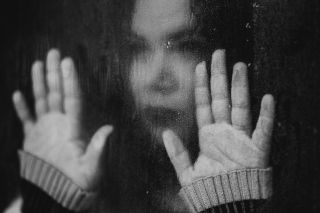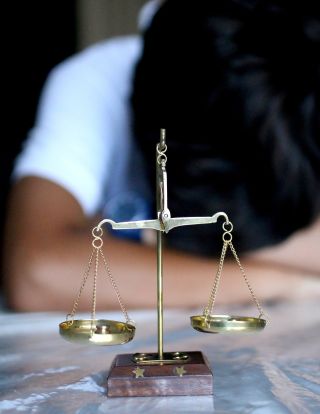Memory
Why Being a Victim Can Distort Your Memory
Eyewitness testimony is unreliable. It's worse when a witness is also the victim.
Posted March 18, 2024 Reviewed by Devon Frye
Key points
- Eyewitness testimony is less reliable than commonly believed.
- Witnesses often report "false memories" of things that did not actually happen.
- People are more likely to misremember events in which they were personally victimized, new research suggests.

Eyewitness testimony plays a central role in the legal system. It often provides the most crucial evidence in determining matters of guilt or innocence in alleged crimes.
Witnesses commonly appear before a court, confidently reciting their versions of events they claim to have seen. Juries are often equally confident in the testimony provided, comfortably taking it into account during their deliberations.
In the public mind, eyewitness accounts also hold high regard. When we hear people recount their experiences, we often take it for granted that they really saw what they claim to have seen and that they are remembering it accurately.
Years of research have demonstrated that this confidence is misplaced. People often do not actually remember what they think they do. In fact, they often did not notice most of what was happening in the first place, as research like the famous "invisible gorilla" experiments illustrates (Chabris & Simons, 2011). Even worse, sometimes what we think we recall is actually a false memory that did not really happen at all (Loftus 2005; Loftus & Ketcham, 1996).
Memory is not a recording, like a saved file on a computer. Instead, recollection is a creative act. This makes it very difficult to distinguish false memories from accurate ones.
There are many troubling consequences of this problem. Not the least of these is that many people who are innocent of a crime are found guilty due to bad testimony, while the guilty might go free. In fact, according to the Innocence Project, inaccurate testimony plays a role in the majority of wrongful convictions.
Given the importance of eyewitness misidentification and its shortcomings, researchers continue to unravel the mysteries of false memories. Over the years, they have identified a wide range of factors that help predict when these are most likely to occur. A recent study adds to this growing body of work by examining another factor that could play a role: the self-reference effect (Wang et al., 2024).
The self-reference effect simply refers to the tendency people have to remember things differently when they, themselves, were involved in some way (Kuiper & Rogers, 1979). In the current study, Wang and colleagues examined how this might play a role in the creation of false memories of a crime. Specifically, will a witness have more false memories when they are the victim of the crime than when they are simply a witness to it?

A Test of the Self-Reference Effect
To answer this question, the researchers conducted an experiment. First, 68 Dutch subjects watched a slide show, consisting of a total of 32 slides, which portrayed a man stealing someone’s wallet on the street.
Next, the participants read a narrative describing the events in the slide show. It consisted of 32 sentences, each describing one of the slides. They were told that a police detective had written it after carefully examining the slides.
Some of these statements were factually incorrect. For example, one sentence might describe how the perpetrator put the stolen wallet into the pocket of his pants, when in the slideshow he really put it in his jacket.
Finally, the participants were asked to complete a memory test asking for various details about the crime they witnessed in the slideshow. For each question, they could choose from three possible choices. One of these was correct while the other two were not.
Six of the questions asked about slides that were described incorrectly in the police narrative. For these, one of the incorrect answers was the misinformation provided by the narrative. If subjects said this is how they remembered the slide show, this indicated that it was actually a false memory based on the narrative. A final set of questions confirmed this by asking subjects to specify whether they remembered their answer based on the slideshow, the narrative, both, or neither.
While these details were the same for all participants, there was one important difference. In the control condition, subjects saw a stranger as the victim in the slideshow. In the self-reference condition, however, the researchers photoshopped the participant in as the victim. Consequently, these subjects saw a slideshow where someone was stealing their wallet from them personally.
Additionally, several of the statements in the police narrative mentioned the name of the victim. For example, “The man put Jane’s wallet into his jacket pocket.” To further increase the sense of self-reference in this condition, this name was swapped out for the participant’s when they were photoshopped in as the victim.
The results showed that there was no statistically significant difference in overall memory between the two groups of subjects. In comparing responses on all questions except for those that included misinformation, both groups remembered with about the same accuracy. This is important to establish; otherwise, any differences in false memories between the groups could just be due to some extraneous factor.
The results also showed the presence of false memories among participants in both conditions. However, there were significantly more of these among those in the self-reference condition than in the control condition. On average, subjects in the self-reference group accidentally remembered 2.74 questions based on the narrative instead of the slideshow. By comparison, there were only 1.77 false memories on average for the control condition.
A stricter test limited this comparison by only counting false memories where the respondents said, on the subsequent questionnaire, that they specifically remembered this misinformation from the slideshow. Although this resulted in the overall number of false memories decreasing for both groups, the self-reference group still reported more false memories than the control group (0.97 on average versus 0.56).
In a second experiment, the authors replicated the same general research design but incorporated some revisions. For example, among other changes, they used a larger sample (n = 122) of Chinese subjects. They also increased the number of slides to provide a more coherent, simulated crime and they measured subjects’ emotional responses to the scenario.
Once again, subjects in the self-reference group exhibited a significantly higher number of false memories (4.10) than those in the control condition (3.36). However, the difference disappeared when using the more stringent measure that required subjects to specify the source of their recollection. The authors suggest this could have been because providing source checks for false memories offers some protection against these; alternately, it may have been due to cultural differences between the subjects in the two experiments.
Mechanisms for False Memory Formation
The finding that self-reference seems to increase the incidence of false memories is important. It is also somewhat surprising, considering people are usually better at remembering things that involve them (Cunningham et al., 2014). However, the authors consider several possible explanations for the finding.
First, it is possible that being personally involved as the victim of a crime causes problems at the encoding stage. In other words, victims may focus too closely on themselves—the most relevant part of the experience—at the expense of other details of the event. This is, again, reminiscent of the sort of attentional bias captured by the invisible gorilla effect (Chabris & Simons, 2011).
With their memory of the event already weak, they may thus be more susceptible to misinformation introduced later and prone to false memory formation. This could stem from many sources, such as hearing leading questions during police interrogation or cross-examination.
Alternately, it’s possible that the increase in false memories is not due to perception problems during the event, but the retrieval of those memories. When asked to remember information about the crime they witnessed, witnesses will again focus on details having to do with themselves. If these details are false, they are more likely to be added erroneously to memory.
The authors provide as an example a situation where a witness is asked, “What were you doing when the man with a red backpack walked past you?” If the backpack was actually blue, the witness will be more likely to misremember it as red since the question ties them individually to this detail of the event.
One final, potential explanation has to do with the emotional nature of the events. Negative emotions like fear are well known to contribute to distortions in perception and memory (Porter et al., 2010). Witnessing a crime can easily arouse such emotions, but these are likely to be even more intense when the witness is also the victim. This would mean the distortion effect would be strongest for these individuals.
The authors did find that stronger negative emotions were associated with more false memories in their second experiment. However, self-reference still had a significant effect even after controlling for emotional response. This suggests it has an independent effect, even though this can be exacerbated by other factors.
Learning From False Memory
The significance of research like this is far-reaching. Relying confidently on our memory or the memories of others can be problematic.
Every day, people argue needlessly over the details of events that they remember differently; in the tabloids, or in conversation, extraordinary claims are often supported by eyewitness testimony alone. As it turns out, this isn’t really good evidence at all. The decisions juries make based on this sort of testimony can have even more serious implications, including at times literally meaning the difference between life and death.
Unfortunately, very few people in the general public are aware of just how fallible memory is. Our memories feel dependable, which makes these problems that much worse. This underlines the need for more research directed at understanding how fallible eyewitness testimony is.
However, it also highlights how important it is to make these problems more widely known. People often say things like, “I know what I saw” or “I remember it clear as day.” Claims like these should not fill anyone with confidence, but should rather sound warning bells calling for caution and skepticism.
Finally, in considering the importance of research on false memories, it is worth noting two important characteristics of Wang and colleagues’ experiment. First, although unpleasant, the simulated crime that triggered the false memories was non-violent in nature. Second, the subjects knew it was just a simulation. If either or both of these factors were to change, the outcome would likely be affected as well.
In other words, the effects of self-reference on false memories could actually be much stronger in the real world than they are in the lab.
References
Chabris, C., & Simons, D. (2011). The invisible gorilla: How our intuitions deceive us. Harmony.
Cunningham, S. J., Brebner, J. L., Quinn, F., & Turk, D. J. (2014). The self‐reference effect on memory in early childhood. Child Development, 85(2), 808-823.
Kuiper, N. A., & Rogers, T. B. (1979). Encoding of personal information: Self–other differences. Journal of Personality and Social Psychology, 37(4), 499.
Loftus, E. F. (2005). Planting misinformation in the human mind: A 30-year investigation of the malleability of memory. Learning & memory, 12(4), 361-366
Loftus, E. F., & Ketcham, K. (1996). The myth of repressed memory: False memories and allegations of sexual abuse. Macmillan.
Porter, S., Bellhouse, S., McDougall, A., Ten Brinke, L., & Wilson, K. (2010). A prospective investigation of the vulnerability of memory for positive and negative emotional scenes to the misinformation effect. Canadian Journal of Behavioural Science/Revue canadienne des sciences du comportement, 42(1), 55.
Wang, J., Wang, B., Otgaar, H., Patihis, L., & Sauerland, M. (2024). Self‐relevance enhances susceptibility to false memory. Behavioral Sciences & the Law. https://doi.org/10.1002/bsl.2644.




